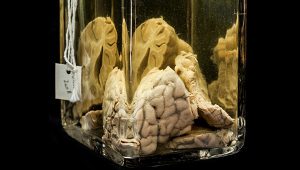Philadelphia – Mütter Museum
I don’t have any internal photos from this museum as they’re not allowed due to the content of what is displayed. The museum, which term themselves as “disturbingly informative”, has medical related exhibits and is run by the College of Physicians of Philadelphia.
The museum, which isn’t that large in physical size, was busy as it was Easter week and many parents thought that the content was appropriate for their children. On the no photographs policy, this was well enforced and there was a threat that anyone who tried would be asked to leave, and I didn’t see anyone try. Which was disappointing, I like watching things like that.
The museum was founded in the 1860s following the sizeable donations of medical specimens and apparatus by Dr. Thomas Dent Mutter, after whom the museum is named. It opened in its original location in 1863 and moved to a larger site in 1909 and it remains there today.
The museum was relatively cramped, primarily due to the number of visitors, and it was difficult to see some items. There was an interesting exhibition on the American Civil War and how injured troops were helped at the time on the battlefield. There wasn’t much opportunity for anaesthetic and there were many amputations which had to take place in the field. There are also some bullets on display which had been extracted from numerous unfortunate soldiers.
I wasn’t entirely engaged with the main part of the collection, it seemed to be made a little sensational, especially with how proud the museum is of calling itself “disturbing”. I’m not entirely sure that medical oddities should ever be disturbing, they’re just different.
On display there were a large number of skulls, wax training models for medical students, a lady who was made of ‘soap’ (a burial found in the city in 1875 where certain chemical reactions had taken place), slices from Albert Einstein’s brain and a number of foetuses which hadn’t made it through to birth.
The above photo (which is from the museum, I didn’t breach the no photography rule) shows one of the wet specimens the museum has. They have 1,300 wet specimens in their collection, and interestingly they’re still adding to this, a reminder that this is an active scientific resource as well as a museum.
To be fair to the museum, they also say that they exist to “appreciate the mysteries and beauty of the human body while understanding the history of diagnosis and treatment of disease”, which does feel rather more positive. I gained admission with my Philadelphia Pass, but otherwise museum entry is $18.


